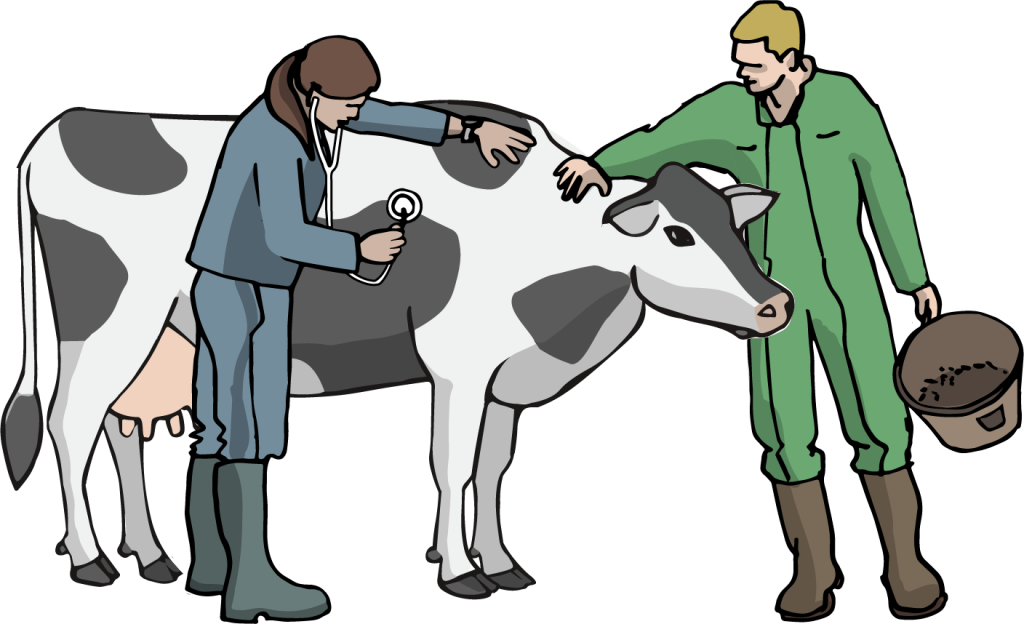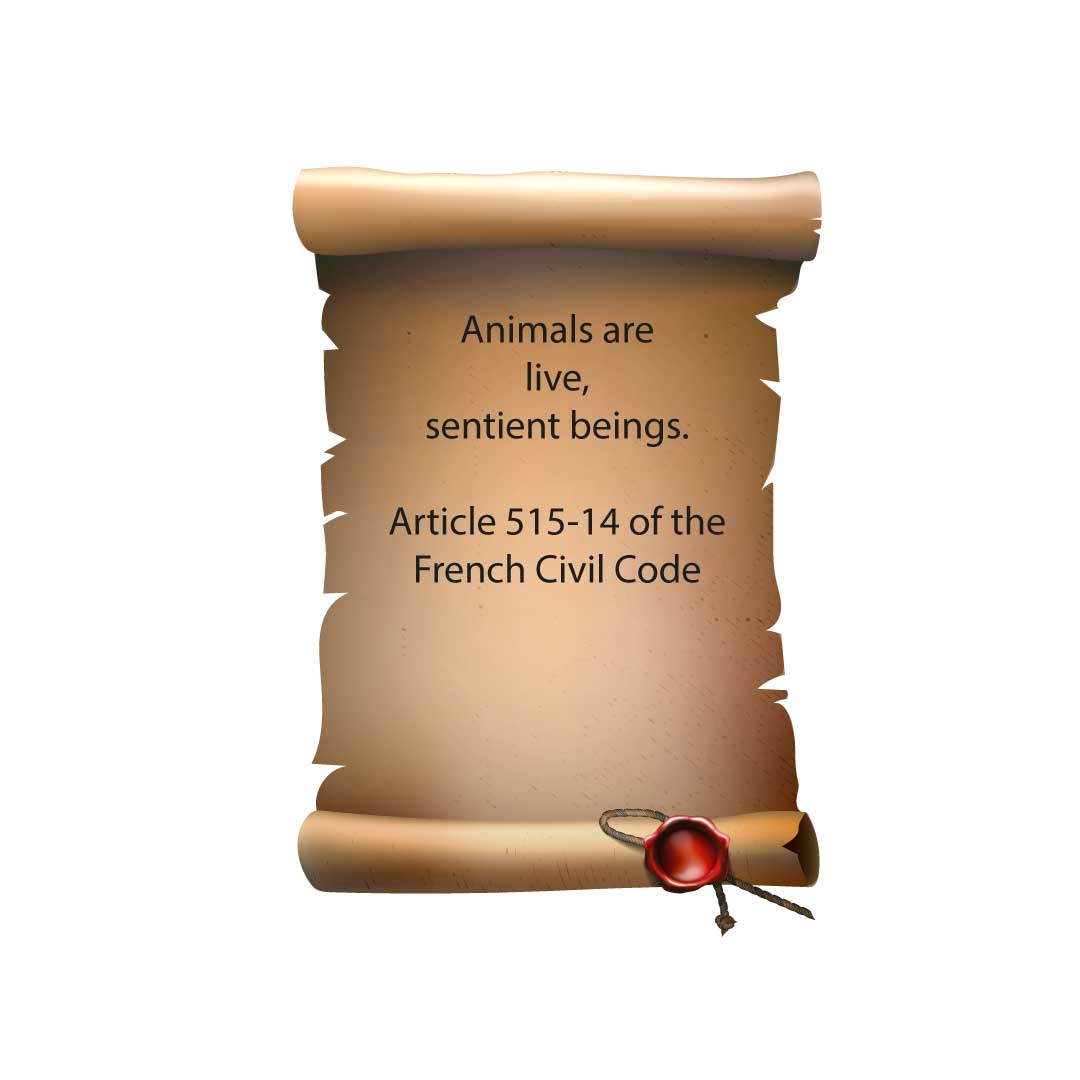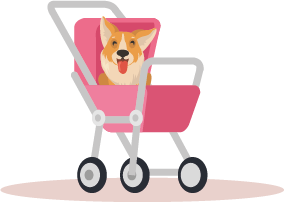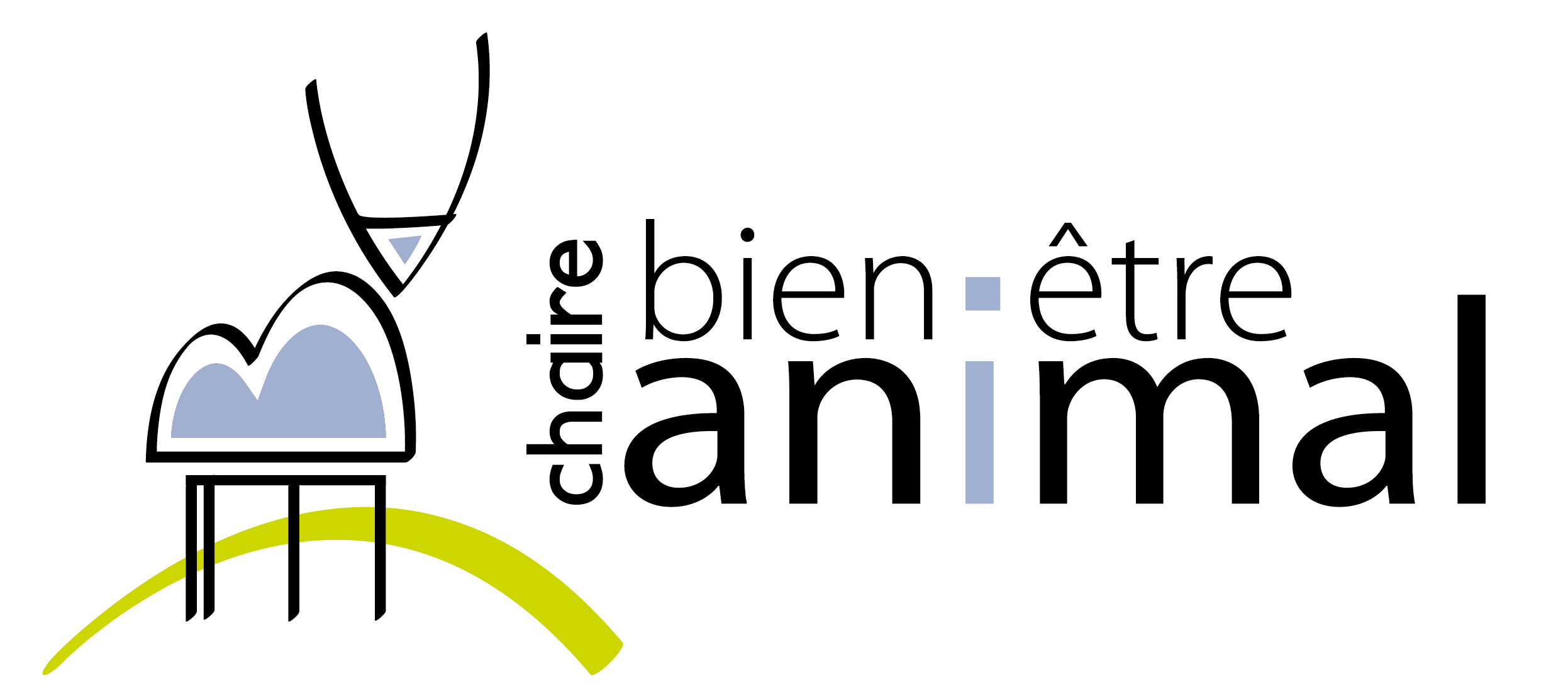

Animal welfare is a growing expectation and as a result there is a growing desire to be kind to animals.
But what do we mean by animal welfare? What is it based on? Is it different from good treatment? Is a caring attitude always synonymous with good treatment?
Animal welfare raises so many important questions!
The scientific definition of animal welfare according to the French Agency for Food, Environmental and Occupational Health & Safety (ANSES)

The welfare of an animal is based on its ability to feel emotions, on its sensitive nature. This has been demonstrated by scientific research for many years and has also been enshrined in law.
Taking into account these elements, the Anses established, in 2018, a scientific definition of animal welfare, mentioning that the content of this definition is subject to change with advances in knowledge.

« The welfare of an animal is its positive mental and physical state as related to the fulfilment of its physiological and behavioural needs in addition to its expectations. This state can vary depending on the animal’s perception of a given situation ». (Anses, 2018)
This definition is fundamental in several ways:
▶︎ First of all, it emphasizes that welfare is unique to each individual. It is therefore more accurate to talk about the welfare of animals rather than animal welfare! The welfare of a group of animals is therefore the result of the welfare of each individual.
▶︎ It states that welfare refers to an animal’s positive physical but also mental state. Therefore, emotions felt by an animal are paramount in assessing its welfare.
▶︎ Finally, welfare varies according to the situation in which each animal finds itself, its perception and expectations… which differ from those of humans… so animal welfare must imperatively be evaluated from the animal’s point of view.
This video made by the Chaire bien-être animal summarizes everything we have just mentioned about the Anses’ definition:
ℹ️ To learn more about this definition, you may also like:
▪︎ this info-poster by the Chaire bien-être animal
▪︎ this page by the French Centre National de Référence pour le bien-être animal
▪︎ this page by the Anses
For other theoretical definitions of animal welfare, watch this video.
Welfare, kindness and good treatment
So then, is showing care for an animal and meaning to treat it well enough to call it welfare? At this point, it seems important to distinguish between the notions of good treatment, kindness and animal welfare.

Good treatment is therefore an obligation of means. It is necessary but does not guarantee welfare, which depends on an animal’s perception and, as such, is an obligation of result.

First and foremost, kindness is an intention, a state of mind. It is necessary for good treatment but does not guarantee it, just as it cannot guarantee animal welfare.
In short:

ℹ️ If you still can’t see the difference, you may want to watch these videos:
▪︎ difference between welfare and good treatment with Luc Mounier, head of the Chaire bien-être animal
▪︎ difference between kindness, good treatment and welfare with Jérôme Michalon, sociologist
This distinction between welfare, kindness and good treatment allows us to understand the involuntary mistreatment sometimes inflicted by owners upon their animals – especially pets – for lack of understanding of their needs and behaviours. To go deeper into the subject, you may read this article by Estelle Mollaret, engaged in the residency programme of the ECAWBM (Animal welfare sub-speciality).

The operational definition of welfare
Although the Anses’ definition is scientifically valid, in practice it may seem difficult to implement because it is very theoretical. This is why relying on a more operational definition may be relevant for a concrete evaluation. The most commonly accepted operational definition of welfare is, as stated in « The five freedoms » guidelines:





These « freedoms » must all be positively evaluated for welfare to be observed.
To better understand the principles of the five freedoms, you may watch this video:
ℹ️ To go deeper into the subject of the five freedoms you may also like:
▪︎ this info-poster by the Chaire bien-être animal
▪︎ this video from our MOOC “Farm animal welfare”

Other operational definitions are sometimes used, notably the one developed in the welfare quality® project, which is based on 4 principles:
– good nutrition
– good comfort
– good health
– appropriate behaviour

Now, two possibilities:
1. You are still lost. In that case, this video recaps everything we’ve just discussed:
2. You have understood everything and you wish to know more. Feel free to download the booklet “Understanding animal welfare” published by Quae.

ℹ️ For an overview of other themes regarding animal welfare, you can consult this file by Pop’Sciences entitled Let’s take care of animal welfare.
Illustrations : Sabine Li, Freepik et Marion Weisslinger

